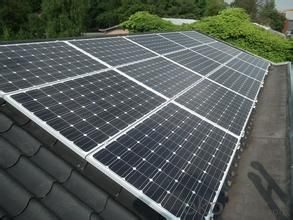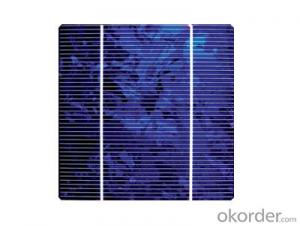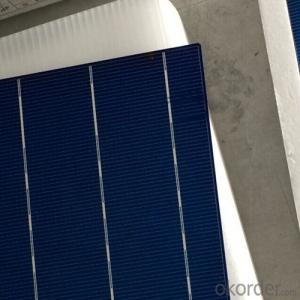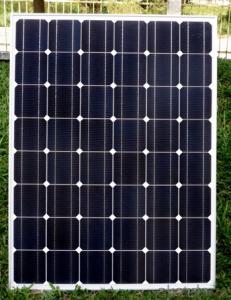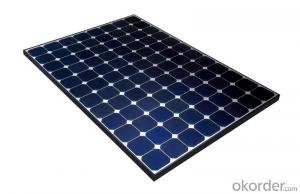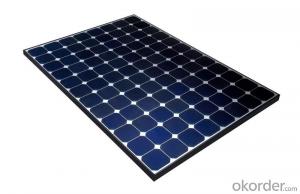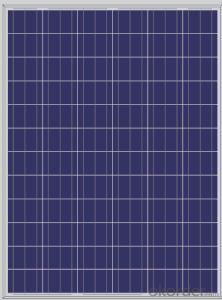Foldable Solar Cells - Poly Solar Panel 25W A Grade with 12 Years Warranty
- Loading Port:
- Shanghai
- Payment Terms:
- TT OR LC
- Min Order Qty:
- 100 watt
- Supply Capability:
- 1000 watt/month
OKorder Service Pledge
OKorder Financial Service
You Might Also Like
Specification
Poly Solar Panel 25W A Grade with 12 Years Warranty
Production description
Photovoltaics were initially solely used as a source of electricity for small and medium-sized applications, from the calculator powered by a single solar cell to remote homes powered by an off-grid rooftop PV system. As the cost of solar electricity has fallen, the number of grid-connected solar PV systems has grown into the millions and utility-scale solar power stations with hundreds of megawatts are being built. Solar PV is rapidly becoming an inexpensive, low-carbon technology to harness renewable energy from the Sun.
The International Energy Agency projected in 2014 that under its "high renewables" scenario, by 2050, solar photovoltaics and concentrated solar power would contribute about 16 and 11 percent, respectively, of the worldwide electricity consumption, and solar would be the world's largest source of electricity. Most solar installations would be in China and India.[2]
Photovoltaics were initially solely used as a source of electricity for small and medium-sized applications, from the calculator powered by a single solar cell to remote homes powered by an off-grid rooftop PV system. As the cost of solar electricity has fallen, the number of grid-connected solar PV systems has grown into the millions and utility-scale solar power stations with hundreds of megawatts are being built. Solar PV is rapidly becoming an inexpensive, low-carbon technology to harness renewable energy from the Sun.
Commercial concentrated solar power plants were first developed in the 1980s. The 392 MW Ivanpah installation is the largest concentrating solar power plant in the world, located in the Mojave Desert of California. The 579 MW Solar Star, nearRosamond, California, is the world's largest PV power station.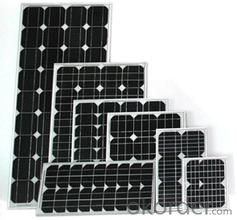
Application
Commercial
Industrial
Residential
Product Feature
12 years quality warranty 25 years performance output.
Free for less than 5 pcs sample requirement
Free to replace or repair or refund if products fail to conform to the PI requirement.
Packaging
28pcs into carton 2carton into pallets 28pallets into a 40ft container
Delivery
After 25 days for manufacturered goods as soon as we received full payment.
After 10 days for stock goods as soon as we received full payment.
- Q: Can solar cells be used in greenhouses or agricultural facilities?
- Yes, solar cells can be used in greenhouses or agricultural facilities. By harnessing the power of the sun, solar cells can generate electricity to power various operations within these facilities, such as lighting, heating, ventilation, and irrigation systems. Additionally, solar cells can help reduce energy costs and carbon emissions, making them a sustainable and eco-friendly choice for agricultural practices.
- Q: What is the impact of dust and dirt on solar cell efficiency?
- Dust and dirt can significantly reduce the efficiency of solar cells. When dust accumulates on the surface of solar panels, it creates a barrier that inhibits the penetration of sunlight, thereby reducing the amount of energy that can be converted into electricity. Additionally, dirt particles can cause shading effects and create hotspots, which further decrease the overall efficiency of the solar cells. Regular cleaning and maintenance of solar panels are crucial to keep them operating at their maximum potential.
- Q: Can solar cells be used for powering navigation buoys?
- Yes, solar cells can be used for powering navigation buoys. Solar cells are an environmentally friendly and reliable source of renewable energy that can efficiently convert sunlight into electricity. By harnessing solar power, navigation buoys can operate independently without the need for traditional power sources like batteries or grid connections. This makes solar cells a cost-effective and sustainable solution for powering navigation buoys in remote or offshore locations.
- Q: Can solar cells be used for powering sports stadiums?
- Yes, solar cells can be used for powering sports stadiums. They have the ability to generate electricity from sunlight and can be installed on the roof or surrounding areas of the stadium. This renewable energy source can help reduce the carbon footprint of the stadium and contribute to a more sustainable and environmentally friendly power supply.
- Q: Are solar cells affected by electromagnetic radiation?
- Yes, solar cells are affected by electromagnetic radiation. Solar cells convert sunlight, which is a form of electromagnetic radiation, into electricity through the photovoltaic effect. However, it's important to note that certain types of electromagnetic radiation, such as infrared or ultraviolet radiation, can have varying effects on solar cell efficiency.
- Q: Can solar cells be used to power electronic devices?
- Yes, solar cells can be used to power electronic devices. Solar cells convert sunlight into electricity, which can then be used to power various electronic devices such as calculators, smartphones, and even larger appliances like laptops or refrigerators when appropriately connected to the solar cell system.
- Q: Can solar cells be used to power remote oil and gas monitoring systems?
- Yes, solar cells can be used to power remote oil and gas monitoring systems. Solar cells are a reliable and sustainable source of renewable energy that can be used to generate electricity in remote locations where access to the grid is limited. By harnessing the power of the sun, solar cells can provide a continuous supply of electricity to power monitoring systems for oil and gas operations, ensuring efficient and reliable monitoring in remote areas. Additionally, solar power offers environmental benefits by reducing reliance on fossil fuels and minimizing carbon emissions.
- Q: Can the solar powered cells really work better than the normal cells?
- Yes, of course, the solar powered cells are much better than the normal cells, not only it functions better but also because it can save much more ebergy while proving more energy.
- Q: Can solar cells be used in large-scale power plants?
- Yes, solar cells can be used in large-scale power plants. In fact, large-scale solar power plants, also known as solar farms or solar parks, are becoming increasingly common as the technology improves and costs decrease. These power plants consist of a large number of solar panels or solar arrays that convert sunlight into electricity on a massive scale.
- Q: Can solar cells be used for powering disaster relief operations?
- Yes, solar cells can be used for powering disaster relief operations. Solar cells are a reliable and sustainable source of energy that can be used to generate electricity in areas affected by natural disasters. They can power essential equipment and devices such as communication systems, medical devices, lighting, and water purification systems, providing crucial support to disaster-stricken areas where traditional power sources may be disrupted or unavailable. Additionally, solar cells are portable and can be easily deployed in remote or inaccessible locations, making them an ideal solution for powering disaster relief operations.
Send your message to us
Foldable Solar Cells - Poly Solar Panel 25W A Grade with 12 Years Warranty
- Loading Port:
- Shanghai
- Payment Terms:
- TT OR LC
- Min Order Qty:
- 100 watt
- Supply Capability:
- 1000 watt/month
OKorder Service Pledge
OKorder Financial Service
Similar products
Hot products
Hot Searches
Related keywords



